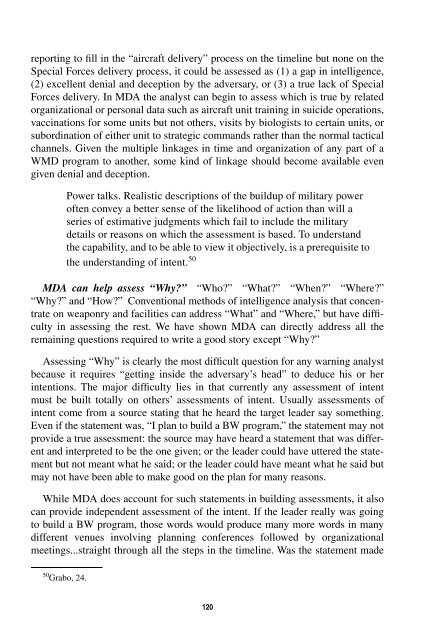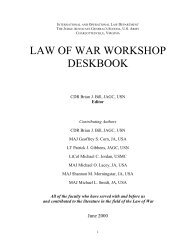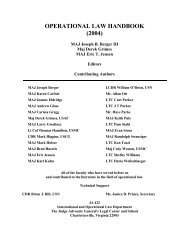Warning Analysis for the Information Age - Higgins Counterterrorism ...
Warning Analysis for the Information Age - Higgins Counterterrorism ...
Warning Analysis for the Information Age - Higgins Counterterrorism ...
Create successful ePaper yourself
Turn your PDF publications into a flip-book with our unique Google optimized e-Paper software.
eporting to fill in <strong>the</strong> “aircraft delivery” process on <strong>the</strong> timeline but none on <strong>the</strong>Special Forces delivery process, it could be assessed as (1) a gap in intelligence,(2) excellent denial and deception by <strong>the</strong> adversary, or (3) a true lack of SpecialForces delivery. In MDA <strong>the</strong> analyst can begin to assess which is true by relatedorganizational or personal data such as aircraft unit training in suicide operations,vaccinations <strong>for</strong> some units but not o<strong>the</strong>rs, visits by biologists to certain units, orsubordination of ei<strong>the</strong>r unit to strategic commands ra<strong>the</strong>r than <strong>the</strong> normal tacticalchannels. Given <strong>the</strong> multiple linkages in time and organization of any part of aWMD program to ano<strong>the</strong>r, some kind of linkage should become available evengiven denial and deception.Power talks. Realistic descriptions of <strong>the</strong> buildup of military poweroften convey a better sense of <strong>the</strong> likelihood of action than will aseries of estimative judgments which fail to include <strong>the</strong> militarydetails or reasons on which <strong>the</strong> assessment is based. To understand<strong>the</strong> capability, and to be able to view it objectively, is a prerequisite to<strong>the</strong> understanding of intent. 50MDA can help assess “Why?” “Who?” “What?” “When?” “Where?”“Why?” and “How?” Conventional methods of intelligence analysis that concentrateon weaponry and facilities can address “What” and “Where,” but have difficultyin assessing <strong>the</strong> rest. We have shown MDA can directly address all <strong>the</strong>remaining questions required to write a good story except “Why?”Assessing “Why” is clearly <strong>the</strong> most difficult question <strong>for</strong> any warning analystbecause it requires “getting inside <strong>the</strong> adversary’s head” to deduce his or herintentions. The major difficulty lies in that currently any assessment of intentmust be built totally on o<strong>the</strong>rs’ assessments of intent. Usually assessments ofintent come from a source stating that he heard <strong>the</strong> target leader say something.Even if <strong>the</strong> statement was, “I plan to build a BW program,” <strong>the</strong> statement may notprovide a true assessment: <strong>the</strong> source may have heard a statement that was differentand interpreted to be <strong>the</strong> one given; or <strong>the</strong> leader could have uttered <strong>the</strong> statementbut not meant what he said; or <strong>the</strong> leader could have meant what he said butmay not have been able to make good on <strong>the</strong> plan <strong>for</strong> many reasons.While MDA does account <strong>for</strong> such statements in building assessments, it alsocan provide independent assessment of <strong>the</strong> intent. If <strong>the</strong> leader really was goingto build a BW program, those words would produce many more words in manydifferent venues involving planning conferences followed by organizationalmeetings...straight through all <strong>the</strong> steps in <strong>the</strong> timeline. Was <strong>the</strong> statement made50 Grabo, 24.120
















